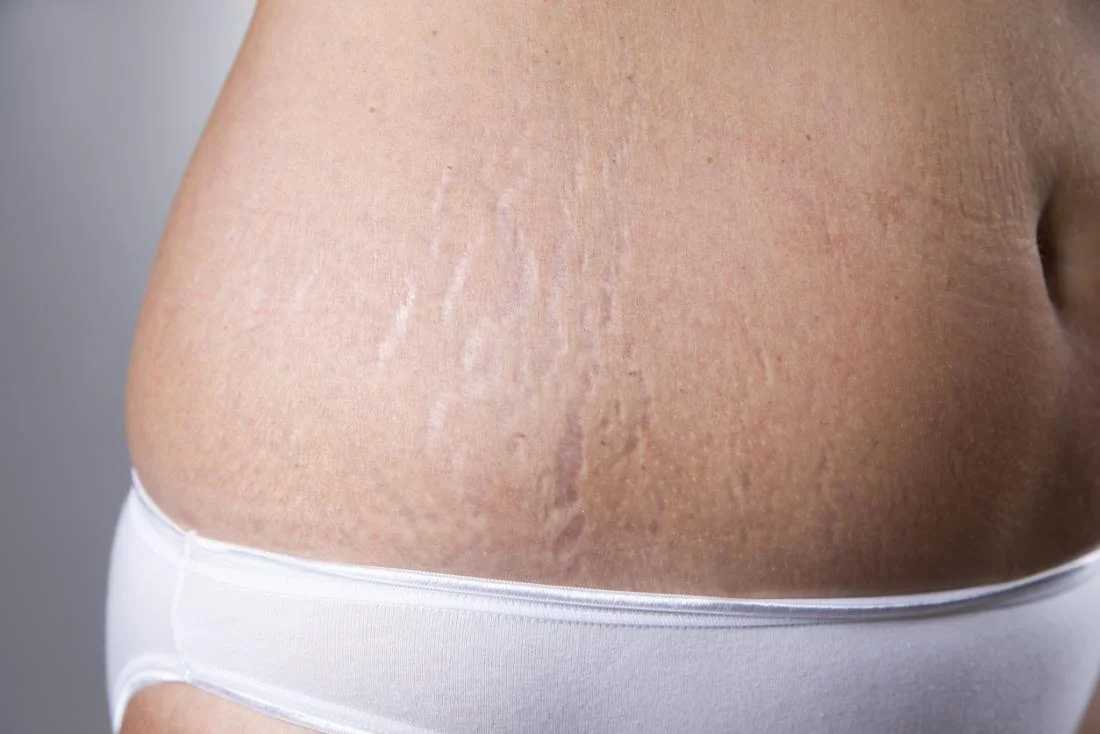
Striae, commonly referred to as stretch marks, appear when the skin undergoes rapid stretching or contraction. This swift change can disrupt the skin’s collagen and elastin fibers, resulting in noticeable streaks. While they don’t pose any health risks, stretch marks can impact your confidence and overall appearance. At Aura Med Spa in Bellaire, TX, we offer tailored treatments designed to reduce the visibility of stretch marks and restore smooth, even skin.
Striae, or stretch marks, can affect anyone, but certain factors increase their likelihood. Rapid skin stretching from pregnancy, weight changes, or puberty triggers their development. Hormonal changes during pregnancy or adolescence weaken skin elasticity, making it more prone. Genetics also play a role—family history increases risk. Conditions like Cushing’s syndrome or Marfan syndrome can also contribute. Understanding these factors helps with prevention and treatment.
Striae present with distinct visual and textural characteristics that can help identify their presence.
Recognizing these symptoms is the first step in determining the best course of action for treatment and prevention.
Recognizing the different types of striae can help you better understand their formation and determine the best treatment approach. Here are the main types:
Identifying the type of striae allows for more targeted and effective treatment options to restore smoother, more even skin.
Striae can develop due to a variety of factors that affect the skin’s elasticity and strength.
Striae treatments focus on improving skin texture, boosting collagen production, and reducing stretch marks. Topical treatments like retinoids and moisturizers support skin renewal and improve elasticity. Laser therapies, such as fractional laser or pulsed dye laser, stimulate collagen and fade discoloration. Microneedling stimulates healing and collagen production by creating tiny, controlled injuries in the skin. Radiofrequency treatments use thermal energy to firm the skin and reduce stretch marks. Results are cumulative and depend on consistent treatment and proper care.
Caring for your skin and incorporating preventive steps can greatly help minimize the appearance of striae.
Understanding striae and their treatment options can help you choose the best approach for managing and reducing their appearance.


Let’s get in touch!